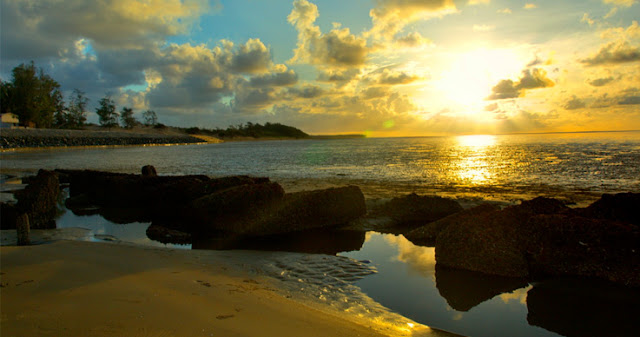This world is full of so many places
to discover, that even a lifetime of travelling will not be sufficient for it.
An Indian strange Chandipur beach, located in the Balasore district of Odisha,
is a place waiting to be discovered. This is called the Hide and Seek Beach,
actually a miracle of nature. Hide and Seek beach always spellbound us by its lovely
and unusual creations. Due to its rare and exclusive phenomenon,
it is globally popularized as ‘vanishing sea’. Apart from this, there are other
amazing features which add to its exceptionality.
One place which is every
person would look at through his own perspective, and that's what discovery
really means. A phenomenon that is rarely seen in any other part of the world,
the sea here recedes by as much as 5KM every day. Odisha, fondly called the “Soul of India”, is
highly rich in its culture and heritage, making it one of the most visited
tourist destinations in India. Also, every year in the month of February, a
beach festival takes place here to setting folk dance, art, and culture of the
State. The beach is also home to biodiversity and supports a wide variety of
sea animals.
Well, believe us or not, the
beach is not a constantly existing feature on the map. At least it doesn't look
the same every time. Is it surprised? Hence, whenever you are at the Chandipur
beach, you can actually see the sea disappear in front of your eyes, and come
back again and see the area of sand dunes. So, when you are at the beach during
the ebb, you can see the water receding massively from the beach and then
coming back during the high tide in order to fill up the emptiness. This Hide
and Seek of the sea comes to play with you twice a day. However, the locals are
fully aware of the time of the high and low tides.
This is the reason why the
beach is home to a host of unique species, i.e., horseshoe crab and the red
crab. It’s a surreal experience to watch the sea disappear before your eyes and
walked on the exposed sea bed. One can find pearls, seashells, crabs and tiny
fish on the shore during the times of low tide. This is not something that
every other beach offers. The sight of Casuarina trees and sand dunes also call
for a visual treat. The ultimate golden colored sea beach has gorgeous
casuarina trees and the solitary sand dunes which make the ambiance over there
more peaceful and soothing.
However, travelers can visit
this dramatic beach anytime. The best time according to the locals is from
November to March. Hide and Seek Beach is in depth feel of magic of nature, to
feel the wet soft sand under your feet and live up the unforgettable
experience. A trip to Hide and Seek Beach will leave you mesmerized on how
beautiful and interesting place in India. If you’re visiting beach in the
afternoon, then don't miss the spectacular sunset here.






















